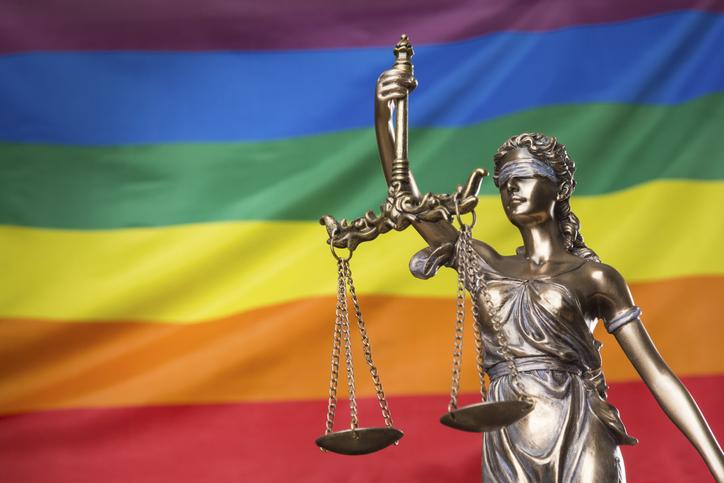While Pride month is a time for every individual and organisation to evaluate its inclusiveness of the LGBTQ+ community, this exercise is particularly salient to higher education institutions, which have always played a central role in supporting the personal identity and purpose of their students.
As such, HE educators hold tremendous sway in inspiring and affirming their students’ career ambitions. This role, which many higher ed leaders consider a responsibility, becomes even more challenging as higher education moves online.
I was in college in the mid-1980s at the onset of the Aids epidemic. I was in the closet – unable to be my true self and unsure what type of career would accept a gay man. I wanted to teach high school social studies but because I didn’t know an openly gay high school teacher, I didn’t think that career was possible.
- Making LGBTQ+ individuals feel safe, valued and empowered on campus
- Supporting LGBTQ+ aspiring leaders in universities
- What LGBTQ+ allyship means in academia
Like so many other LGBTQ+ people who were in the closet at that time, I didn’t have a role model who could show me what was possible. This impacted my confidence and the decisions I made about my education and career. I opted to study psychology and political science rather than pursue the career in education that I really wanted.
Today, as president of an online university and a board member of LGBTQ+ Leaders in Higher Education, I understand the value, and the challenge, of ensuring that all students can bring their true identity to their learning and career ambitions and have role models that inspire them.
Higher education must send clear signals that it is safe for a student to be their true self, and models of what they can achieve should also be front and centre. On a traditional college campus, this may look like having clubs and affinity groups for LGBTQ+ students or events that bring similar identities and allies together. However, creating these safe spaces online can be challenging.
As more learning moves online, higher ed leaders should consider intentionally building online communities that are inclusive for LGBTQ+ students. Here are four ways to do that:
1. Foster student connections and support
At Capella University, where I’m president, we’re gearing up to launch a new initiative later this year that creates opportunities for students with shared identities to connect online. These learner groups intend to foster a sense of belonging and connection among students with similar experiences. It’s also important to ensure student advisers and coaches are equipped to provide support to LGBTQ+ students. They should be trained to identify a student in distress and, if needed, connect them to mental health services, support groups and other counselling services.
2. Celebrate and support LGBTQ+ faculty and staff
Because role models are integral in shaping career aspirations and confidence, it’s important to promote the leadership contributions of LGBTQ+ faculty and staff members. One powerful way to support inclusivity among faculty and staff is through employee resource groups (ERGs). This creates a safe space for LGBTQ+ employees – a community in which people can support each other and feel supported by allies.
Encourage LGBTQ+ faculty to share their own experiences. Give them the opportunity to be open with students about their own educational and professional journeys. This might include encouraging them to use pronouns in their email signatures or hold virtual town hall forums with LGBTQ+ students and faculty.
For all faculty, training can help them identify cultural assumptions and modify discussions, course materials, assignments or exams accordingly to ensure their classes are inclusive and foster robust dialogue.
3. Develop inclusive content
Seek to include online course content and student resources created by members of the LGBTQ+ community to ensure it resonates with students who share similar experiences, as well as helping all students recognise the value of these community members to the field they are studying.
It’s also important that LGBTQ+ topics are included in the curriculum. Do readings and examples include different types of families, or do they portray only heterosexual relationships?
Audit your website, social profiles and materials: does your website’s collection of photos and images match the diversity of the student body? Seek out LGBTQ+ staff members to help select images.
4. Leverage online events
Online learning is uniquely situated to leverage resources without geographic limitations. Given modern tech capabilities, attention to high-quality online experiences and increasingly common use of both synchronous and asynchronous platforms, universities can now think more broadly about events, speakers, training and more that help build more inclusive communities.
These events are an ideal opportunity to bring together students with common interests and identities while connecting them to role models with similar backgrounds who can help demonstrate what is possible. For example, a workshop or talk by a successful LGBTQ+ writer, lawyer, business leader or similar can be instrumental in achieving both goals.
Higher education will continue to be a time for student identity and career exploration, but as it evolves online, it will require new, creative programmes and strategies to do that. HE educators owe it to students to help them safely explore and find their true potential – and feel empowered, not discouraged, by their identity. This is what Pride is all about.
Richard Senese is president of Capella University and a licensed psychologist. He is a member of the board of LGBTQ+ Leaders in Higher Education.
If you would like advice and insight from academics and university staff delivered direct to your inbox each week, sign up for the THE Campus newsletter.




comment